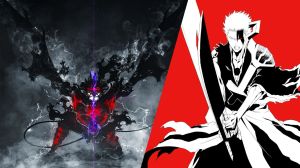Dripping with style and full of distractions to be explored, Ghost of Tsushima emerged confidently as one of the standout releases of 2020. Backed by the legacy of Sony’s commitment to robust single-player experiences, the game from Infamous creators Sucker Punch Productions did not squander its opportunity to captivate with a stunning, rich world ripe for exploration and a combat system that begged to be mastered. With few significant shortcomings to speak of and continued support through Ghost of Tsushima: Legends, it’s easy to see why it topped many players’ best-of lists for the year.
Videos by ComicBook.com
Ghost of Tsushima initially attracted comparisons to Assassin’s Creed due to its use of open-world exploration, skill trees that channeled stealth vs. aggressive playstyles, and its third-person combat, but whether you found those comparisons apt or not, the desire Ghost of Tsushima fulfilled remained the same. People had long been asking for an open-world game of this style that’s housed in a historic Japanese setting to be made by anyone who could deliver on the concept. The “who” didn’t matter as much as the “what” did, but after seeing Sucker Punch’s take on it, it’s hard to imagine a better fit than Ghost of Tsushima.
One of the best examples of the commitment to creating such a distincive and stylish game is the “Kurosawa Mode,” a totally optional feature that’s not even one of the core parts of the game. At face value, it puts a black-and-white filter on Ghost of Tsushima, but there’s more to it than that. Inspired by Japanese filmmaker Akira Kurosawa, it adds a grainy film effect on top of the decolored scenes while still retaining the detail of Ghost of Tsushima’s visuals and even adds muffled effects to sounds to invoke the experience of watching old movies.

What impressed me most of all was that it wasn’t even something players had to use – I preferred the unaltered version of Ghost of Tsushima and kept Kurosawa Mode off for 80% of the game. What mattered is that there was so much effort put into something that was completely voluntary just so players could experience the game in such a unique way if they chose to do so. It’s that kind of commitment that you can feel embedded into the entirety of Ghost of Tsushima the more time you invest into it.
Filters and alternate modes aside, exploration is the gameplay element of Ghost of Tsushima that truly shined. Tsushima may be an island, but you’d hardly know that with how its borders seemed to expand continuously right when you think you’ve seen all there is to see in parts of the map. Locking exploration behind story progression helped gate some content for later so as not to burn players out too quickly, and while it’s still possible you’d have diminished incentives to explore later in the game depending on how thorough your explorations were, it adequately spread the content for players to enjoy over time.
There was no shortage of quests to undertake in Ghost of Tsushima with most of them grounded in realism, but the most rewarding ones to me in terms of progression and narratives were the “Mythic Tales.” Fiery blades and legendary swordsmen filled these quests that asked “what if?” questions and pushed the boundaries of the sensible, rational Jin Sakai’s understandings of Tsushima. It would’ve been easy to give way to the outlandish and unreal in creating these quests, but Sucker Punch’s ability to teeter on the edge of believable while awarding players with impactful gifts for completing them was commendable.

Stealthy and head-on scraps in Tsushima’s open fields and villages comprised the majority of Ghost of Tsushima’s combat, but if there was one fighting feature above all that I never tired of, it was the one-on-one duels. These cinematic spectacles were the cousins of the Kurosawa Mode, battles suspended in time in the middle of wars raging around them where you either focused on your opponent’s every move or you got run through and had to start over. Even the standoffs, the smaller “duels” where you stood up to a camp instead of slinking through a busted gate, elicited smaller doses of the same feelings these duels brought on. If there were ever a game that deserved a boss rush mode or at least an option to challenge more enemies to duels, it’d be Ghost of Tsushima.
Perhaps one of the most promising things about Ghost of Tsushima is the potential it holds even after your first playthrough. Whether your next step is to start anew with a totally different playstyle, to try for a more challenging difficulty level, or to delve into the Ghost of Tsushima: Legends multiplayer component, Tsushima is an island that begs to be revisited. The fresh IP has the potential to grow beyond what we’ve already seen, but even if it doesn’t, Ghost of Tsushima should be remembered as an ideal end cap to a generation and a superb standalone experience.








